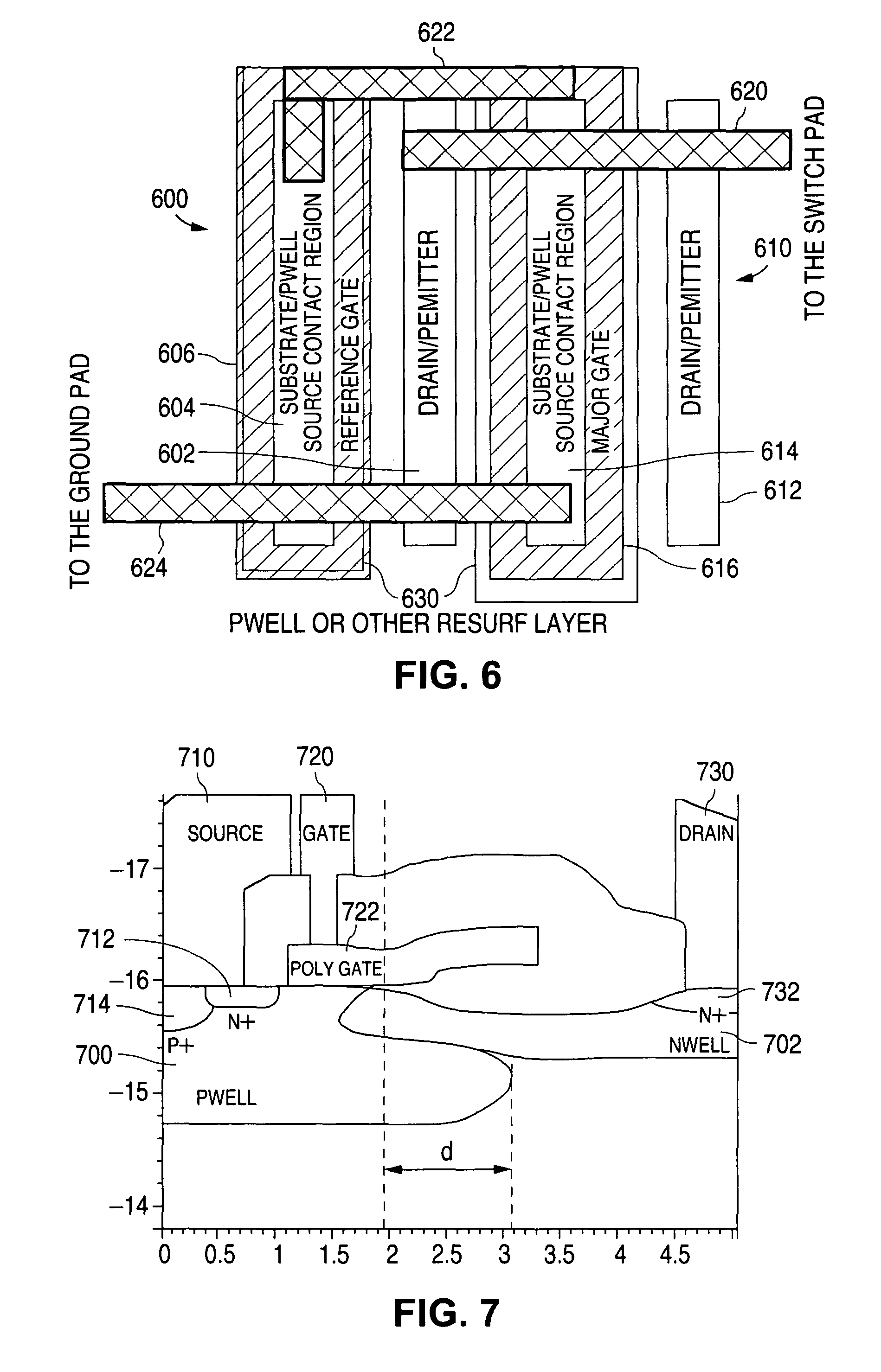High voltage ESD LDMOS-SCR with gate reference voltage
a high-voltage esd and gate reference technology, applied in the direction of semiconductor devices, electrical apparatus, transistors, etc., can solve the problems of high voltage, high voltage protection of esd, encountering problems,
- Summary
- Abstract
- Description
- Claims
- Application Information
AI Technical Summary
Benefits of technology
Problems solved by technology
Method used
Image
Examples
second embodiment
[0022]the invention is shown in FIG. 4, in which the reference LDSCR is not a separate LDSCR but constitutes one of the fingers of the LDSCR array. Thus reference LDSCR 400, which is implemented as a self triggering structure by having its gate connected to its source, is part of the same array as the major LDSCR 402. The reference LDSCR 400 again has its source 410 connected to the gate 412 of the major LDSCR 402. In this embodiment the p-well of the LDSCR acts as the resistor 420 that connects the gate 412 of the major LDSCR 402 to ground.
third embodiment
[0023]In the third embodiment shown in FIG. 5, the arrangement is essentially the same as in FIG. 4, but instead of relying on the p-well to provide the resistance for controlling the gate voltage to the major LDSCR, the FIG. 5 embodiment makes use of a separate poly resistor 520. Since the rest of the structure remains substantially the same as in FIG. 4, the same reference numerals have been used in FIG. 5 to depict similar elements as in FIG. 4.
[0024]The LDSCR arrangement thus works as follows. As the voltage increases above the reference LDSCR avalanche breakdown level, the avalanche breakdown current is realized through the gate resistor 320, 420, 520. The voltage drop on the gate resistor 320, 420, 520 creates a gate bias voltage for the major LDSCR. This results in a reduction of the snapback turn on voltage of the major LDSCR fingers, allowing them to turn on.
[0025]In order to define the avalanche breakdown voltage of the reference LDSCR, the p-well RESURF is adjusted by man...
PUM
 Login to View More
Login to View More Abstract
Description
Claims
Application Information
 Login to View More
Login to View More - R&D
- Intellectual Property
- Life Sciences
- Materials
- Tech Scout
- Unparalleled Data Quality
- Higher Quality Content
- 60% Fewer Hallucinations
Browse by: Latest US Patents, China's latest patents, Technical Efficacy Thesaurus, Application Domain, Technology Topic, Popular Technical Reports.
© 2025 PatSnap. All rights reserved.Legal|Privacy policy|Modern Slavery Act Transparency Statement|Sitemap|About US| Contact US: help@patsnap.com



